
This in-depth guide explains the success factors for creating a digital transformation strategy and implementing a digital transformation plan. We will show how to use different planning frameworks to structure activities needed for transformation.
Our research shows that today many businesses are realizing the imperative for digital transformation. Many businesses are realizing that to compete using digital marketing, data and technology, a structured process of digital transformation is needed.
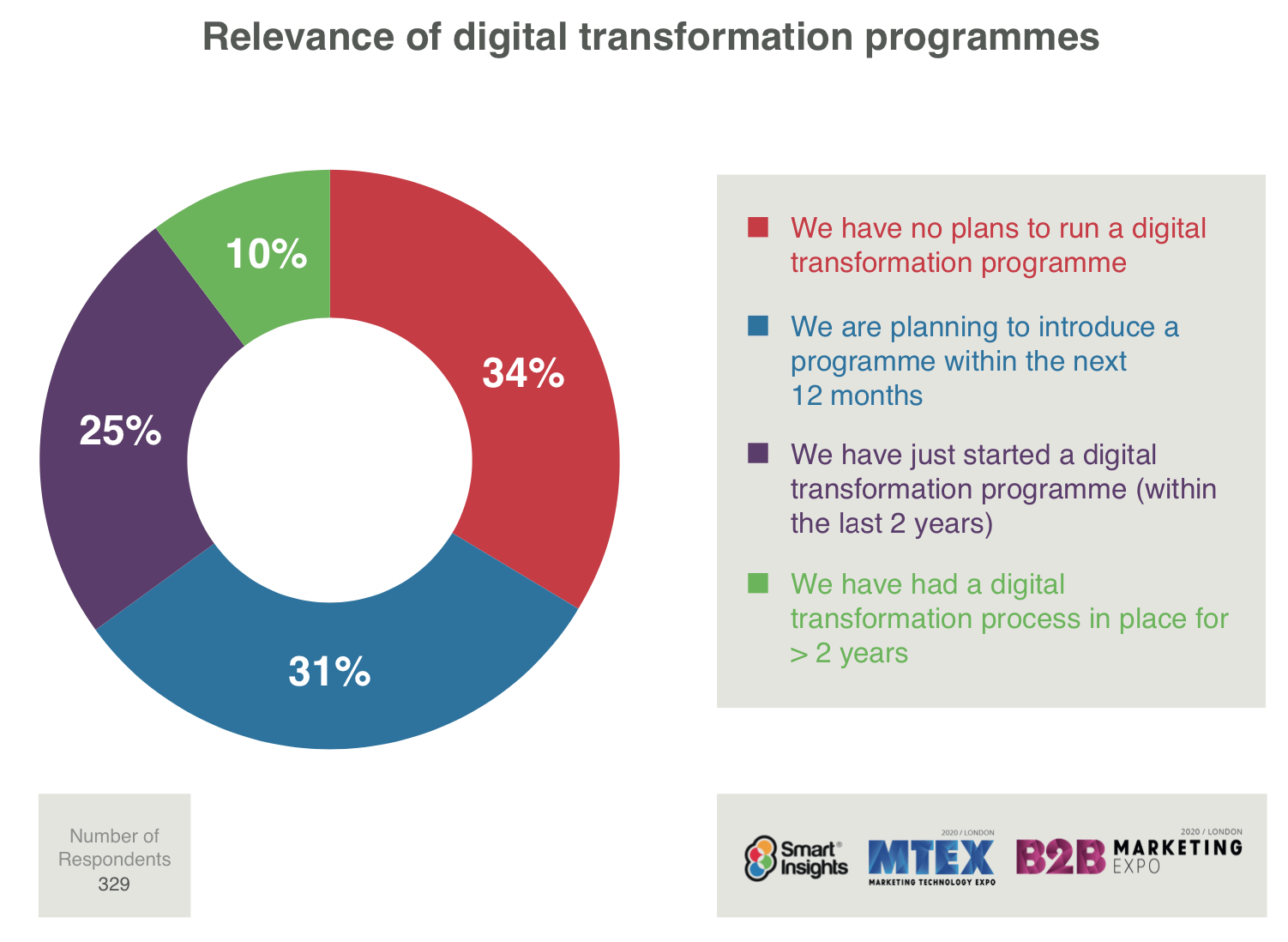
Download your free RACE Growth System guide today and unlock our three-step plan of Opportunity, Strategy and Action to grow your business.Create your 90-day plan with the RACE Growth System
Digital transformation gives opportunities to use technology to drive efficiencies for both sell-side customer interactions and buy-side interactions with suppliers. In larger organizations, the scope of transformation may include both and also internal communications and knowledge management related to the company intranet as shown by this visual.
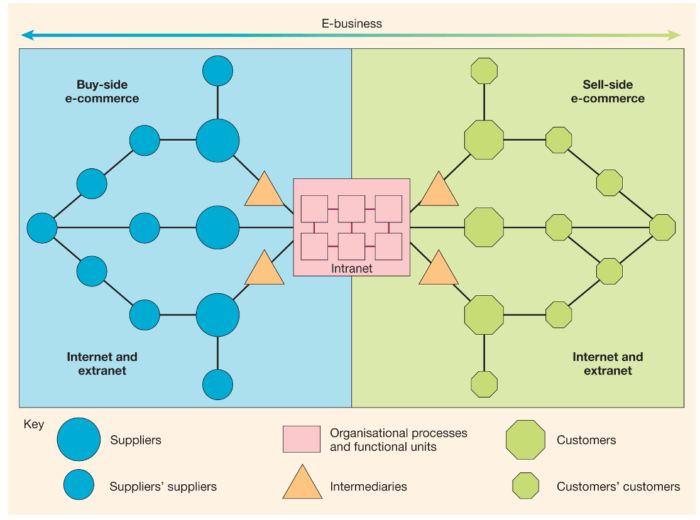
The scope of digital transformation strategy
Source: Digital, Marketing, Strategy, Implementation and Practice, 7th edition, by Dave Chaffey and Fiona Ellis-Chadwick
In this article, we focus on improvements to customer marketing communications to support customer acquisition. The scope of the transformation project may include introducing a transactional e-commerce platform, but this is not relevant for all industries, for example, complex, high-value business-to-business services which are selected by many people in a business may never be sold online. Likewise, some e-commerce facilities may be limited to parts or customer service.
In our experience, the scope of digital transformation projects is often too narrowly focused on technology. Transformation projects are often rooted in applying digital technology, indeed the Wikipedia entry for digital transformation focuses exclusively on technology.
We believe this is a mistake since technology is only a tool to deliver customer interactions and support processes across different devices. While selecting the right type of technology to form a martech stack is a key part of transformation strategy, it's best to start with how the customer value proposition and customer experience will be affected and how this meets business objectives for customer acquisition and retention. Opportunities for new ways of doing business through new business models also need to be considered to counter digital disruption by new entrants to a marketplace.
Harvard Business Review concurs, in their article Digital transformation is not about technology they note that:
"Because most digital technologies provide possibilities for efficiency gains and customer intimacy. But if people lack the right mindset to change and the current organizational practices are flawed, DT will simply magnify those flaws".
The article suggests five different lessons to reduce the technology fixation of which we think these are most pertinent:
We agree, creating a customer-centric digital marketing transformation strategy that aligns with business strategy is essential. The structure we recommend in the next section explains how to achieve this.
We define digital transformation for marketing as:
"A staged programme of organizational improvements to business models, people, process and technologies used for integrated digital and multichannel marketing in order to maximize the potential business contribution of digital technology and media".
Notice that we emphasize integration of digital and multichannel marketing since it's vital that digital marketing activities don't become siloed, for example in a specialist digital team. Although, a digital marketing centre of excellence is a structural response we recommend since this gives a core team to manage and prompt adoption of digital marketing techniques and technologies.
From a consumer perspective too, a multichannel integrated approach is best since customers are channel-agnostic and will want a seamless experience across digital and traditional channels.
The Salesforce definition of 'What is digital transformation?' also highlights the importance of integration across functions and putting customers at the heart of transformation:
"Digital transformation is the process of using digital technologies to create new — or modify existing — business processes, culture, and customer experiences to meet changing business and market requirements. This reimagining of business in the digital age is digital transformation.
It transcends traditional roles like sales, marketing, and customer service. Instead, digital transformation begins and ends with how you think about, and engage with, customers".
The scope of transformation should involve managing and harnessing these ‘5Ds of Digital’ as Dave Chaffey of Smart Insights explained in his book Digital Marketing: Strategy, Planning and Implementation. The 5Ds define the opportunities for consumers to interact with brands and for businesses to reach and learn from their audiences in different ways:
Let's look at a practical example from the banking sector of why transformation is needed. This usability research on the UX of banking involved competitor benchmarking where where different activities like opening an account was logged and compared.
This study highlights the digital disruption caused by challenger banks and how some industry incumbents have improved their customer experience, but others haven't. The findings are shocking... Look at the difference between the 10+ days for an account to become active from existing banks in comparison to the 2-3 days for an account to be active from challenger banks like Monzo, Starling and Metro.
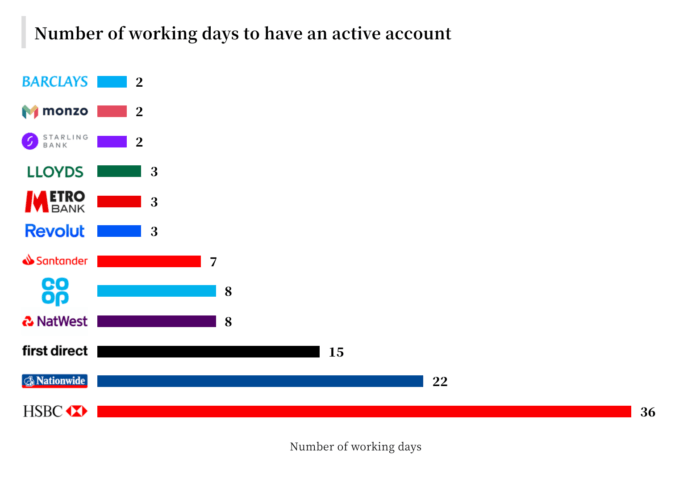
Some traditional banks like Barclays and Lloyds have revised their back office process using STP (straight-through processing), so that they offer a 2-day turnaround process. In terms of digital experiences, the challenger banks perform even better and some of the traditional companies offer a much poorer experience.
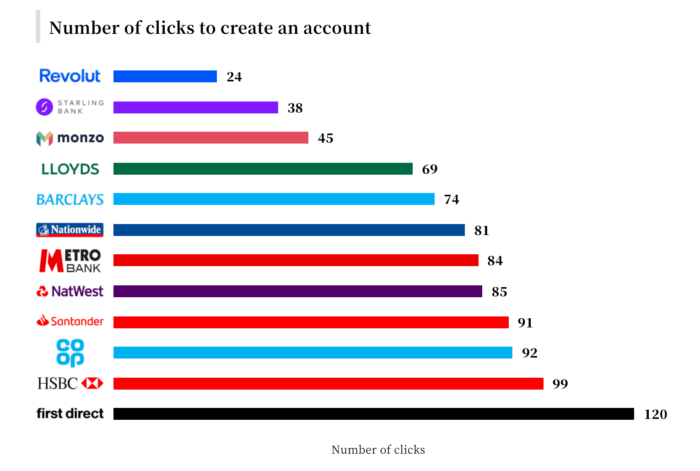
It's clear that the customer experience is much poorer when the process tasks much longer and this will translate to frustrated customers and lost business.
Recognizing the need for a managed transformation process in an organization is an essential early part of the process in order to get the buy-in and investment needed to make transformation a success. Consider some of the common problems if you don't have a structured transformation plan (read more in our post 10 reasons you need a digital strategy):
Yet, each of these issues can be solved through a defined transformation programme which follows a logical process and defines the main activities that need to be prioritized.
To follow an established process for digital transformation strategy we recommend combining the Smart Insights RACE planning system and PR Smith’s SOSTAC® Planning Model.
SOSTAC® is a widely used tool for marketing and business planning which is rated in the top three most popular marketing models in our review of Marketing Models that have stood the test of time. The SOSTAC® process covers six steps which apply well to managing digital transformation:
Created in the 1990s by writer and speaker PR Smith, the SOSTAC® framework has built an authoritative reputation as the framework of choice for different scales of business including multinational and start-up organizations across the world.
However, the six parts of SOSTAC® don't give details on which digital transformation activities should be worked on, however, our SOSTAC® Digital Marketing Planning Guide advises on this.
Smart Insights RACE explains the detail needed to prioritize digital marketing activities since it gives a comprehensive definition of 25 activities that should be considered for prioritization on your digital transformation roadmap. These are summarized in this infographic which explains how the SOSTAC activities relate to RACE.
Let's now consider activities involved in each step.
This review should assess opportunities for deploying digital marketing and technology in your organization and review limitations. Analysis of your digital contribution to your business should be part of this compared to competitors. Activities to include at this stage are:
Stage 2 of your digital transformation plan should define the objective/s of your transformation strategy. Consider the 5 Ss goals refer to Sell, Serve, Speak, Save and Sizzle as SMART objectives.
We recommend that objectives are clearly aligned with strategies to achieve goals and the drivers of these objectives such as business objectives or market research. Key performance indicators (KPIs) should also be detailed.

The scope of digital transformation strategy
Source: Digital, Marketing, Strategy, Implementation and Practice, 7th edition, by Dave Chaffey and Fiona Ellis-Chadwick
Objective setting relates to the control stage where it's important to use the right dashboard and performance review approach to improve performance.
Strategy defines how you plan to achieve the objectives set for customer acquisition, conversion and retention.
For transformation projects, you need to select strategic initiatives to achieve your goals. These may include These are decisions about investment, resourcing and governance which are also highlighted in the action section.
The Deloitte CMO survey highlights how transformation project can support business growth strategies business:
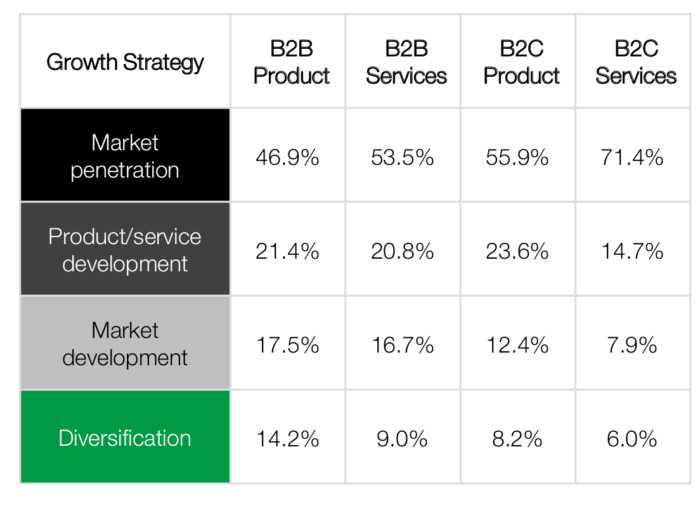
Typically, much investment in digital marketing communications is focused on market penetration of existing products into existing markets. However, transformation strategy should also consider more disruptive strategies to support product development and market development. Digital technologies give opportunities for digital or digitally augmented services and to enter new geographic or customer markets at a low cost. So transformation strategy relates closely to market segmentation, targeting and positioning (STP) strategies. These will require review of business and revenue models related to the 4Ps including Product, Place, Pricing and Positioning.
Writing on LinkedIn, Andrew Annacone, Managing Partner at TechNexus Venture Collaborative recommends there are four types of transformation to consider:
Governance is a key success factor for digital transformation projects covering issues such as resourcing, skills development, team structure, performance review and improvement process and how these are supported by marketing technology. The McKinsey 7S framework provides a useful way to review these governance decisions.
Tactics cover the specific tools of the digital mix that you plan to use to realize the objectives of your plan. In practice, these tactics are delivered as 'always-on' digital communications across the customer lifecycle. Planning in these integrated digital and traditional communications which go beyond marketing campaign communications are needed to make the most of the opportunities of digital marketing, yet they are often missed if a structured transformation approach hasn't been followed.
As our customer lifecycle analysis visual shows, 'always-on' paid, earned and owned digital media are particularly important. If you can encourage initial interactions with a brand based on search intent to buy a product, there are opportunities to design integrated communications to influence audiences throughout the customer lifecycle using email automation, web personalization, and re-targeting.
When completing your performance review you will have considered your existing capabilities to deliver these. Access our free digital marketing benchmarking templates to review your performance across RACE.
Our six pillars of success are based on what we have seen to often be missing parts of the planning puzzle when consulting and training with many companies from small to large to help them develop a comprehensive plan.
The six pillars of success for digital marketing tactics
To simplify this complexity from the hundreds of tools and communications channels to potentially use we recommend six key pillars for success for implementing transformation which must be sufficiently resourced and a dedicated strategy created. These are shown in the visual.
Key activities for the six digital pillars (click to enlarge)
The first two pillars relate to Objective setting and Control, governance should be considered as part of strategy. The other tactics are four key implementation factors. For each, we have highlighted under deliverables, our guides and templates that our premium members use to learn more and created detailed plans of action.
1. Planning and governance
2. Goals and measurement
3. Media
4. Content marketing
5. Digital Experience (website)
6. Conversational messaging
Stage 5 is focused on turning your plan into action. The action section covers what needs to be achieved for each of the tactics listed in the previous sections of the SOSTAC® plan to realize the objectives of your digital marketing plan.
This will include project plans and roadmaps of activities as recommended in our transformation toolkit.
Change management plans are a key success factor for transformation since staff need to be fully involved and informed as how changes introduced will affect their way of working. Our change management for digital transformation recommends best practice approaches.
It will also include consideration of your marketing technology stack as described in our guide to marketing technology selection.
The final stage is to lay out how you plan to monitor and measure your performance based on the objectives set at stage 2. We recommend using a digital marketing dashboard structured around RACE which will enable you to review performance of digital channels in achieving leads and sales month-on-month and year-on year.
Our RACE digital marketing dashboard in Google Sheets is used by our premium members to review performance based on an API integration with Google Analytics.
Success in transformation requires sufficient investment in digital marketing activities. We recommend transformation projects ensure sufficient investment across these six pillars:
In our experience of reviewing organisational digital capabilities as part of digital
power in favour of the customer - now the connected customer. The connected customer is transformation projects, we find that there is often an imbalanced approach to improving digital-savvy, and can easily sidestep traditional marketing methods. They can record TV the impact of digital communications.
Often, there is a narrow focus on the website shows on digital recorders and fast forward the adverts, ignore banner adverts on websites experience and content and technology to support it. While these are at the heart of digital and have conversations on social media without engaging directly with any marketing or transformation and vital in achieving your goals, there are other success factors that are messaging. Consumer research conducted by Neilsen revealed that peer-to-peer reviews critical that relate to the off-site marketing and internal communications.
Here’s a summary checklist of 10 key success factors for digital transformation that you need to communicate as part of your vision of how an organization need to change in future:
These success factors are consistent with McKinsey research on unlocking success in digital transformations which highlights the importance of senior involvement for governance and to support change management and collaboration.
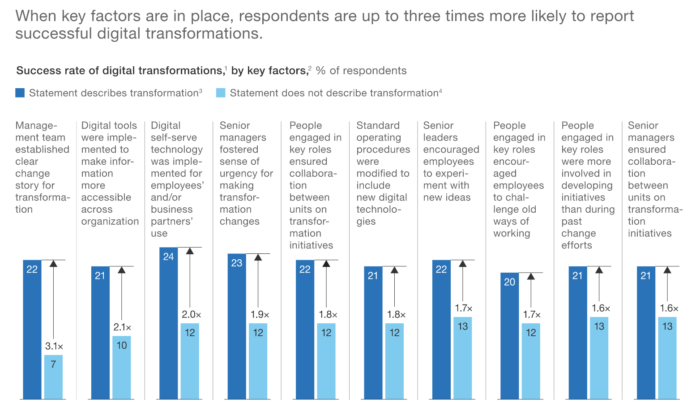
Our premium Smart Insights resources are dedicated to helping businesses navigate the transformation process. Use the transformation playbook in our Digital transformation toolkit to check the key activities to include in your roadmap.
Our CPDSO-accredited Digital Learning Paths available with Business membership give a comprehensive solution to your training needs for digital transformation, providing an interactive learning experience that takes you from the basics through to advanced execution and reporting.
Each learning path integrates with Word, Excel and Powerpoint templates to help you map, plan and manage your transformation.
Recommended learning paths are:
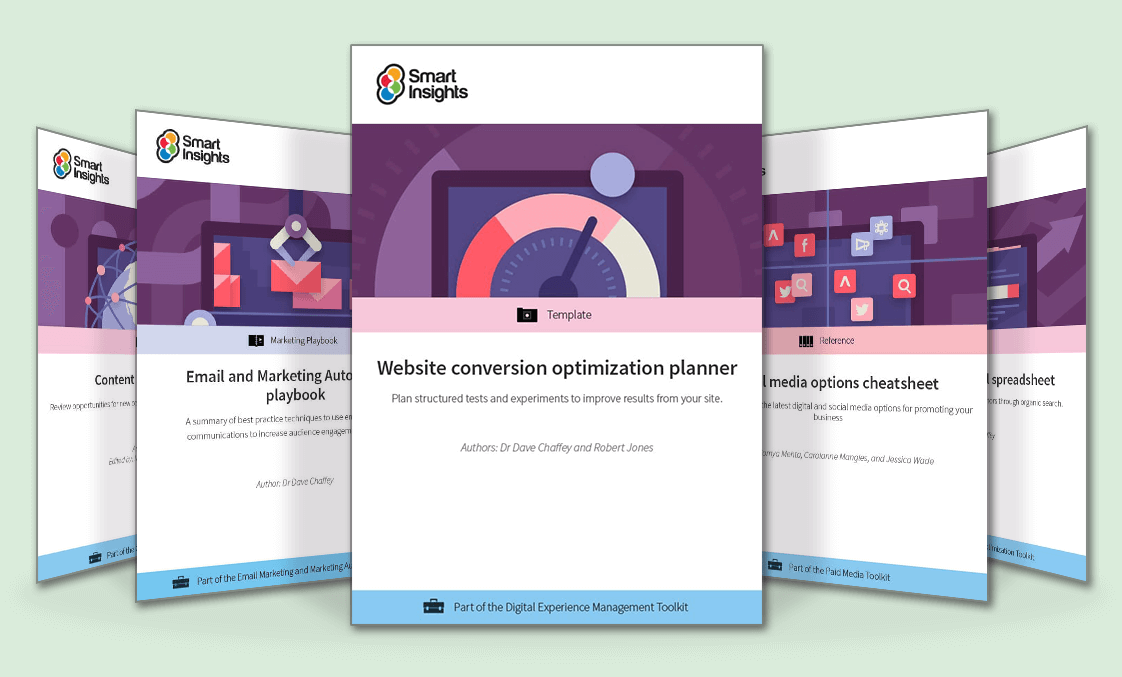
Turbocharge your results with this toolkit containing 11 resources
